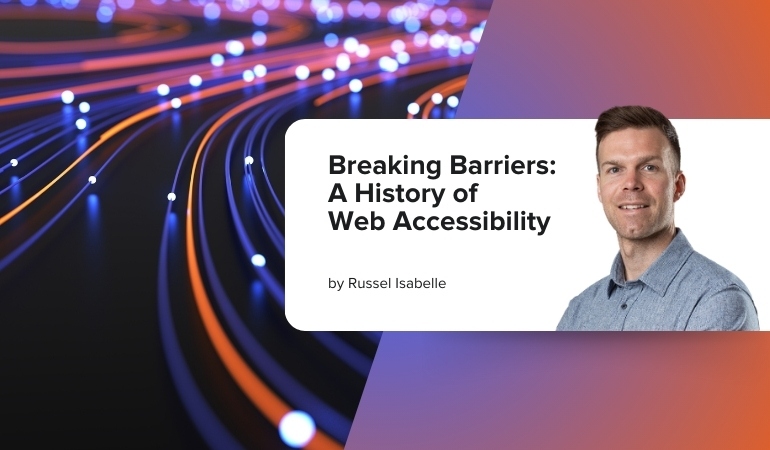Accessibility has been a part of the internet since its creation. As digital experiences have grown more complex, the standards to ensure equal access have evolved alongside them, shaping how websites and digital applications are designed today.
Growing up with a hereditary speech disorder, I’ve always understood the importance of equality. Over time, my personal experience has fuelled my passion for web accessibility and has shaped the way I think about inclusive design.
Understanding the history of web accessibility helps explain why current standards exist, how they’ve been refined by real-world needs, and why they remain such a vital part of building better digital experiences for everyone.
Early 1990s: The Birth of the Web and the Role of W3C
The internet itself was invented by Tim Berners-Lee in 1991, who later founded the World Wide Web Consortium (W3C). His goal was to ensure the long-term growth of the web by developing consistent standards and guidelines that make it inclusive for everyone.
Its impact was massive and laid the foundation for the web as we see it today. If you’ve heard of HTML, CSS, and URLs, those foundational web technologies were established by W3C
1999: Formalising Accessibility Standards
W3C didn’t stop there—they also introduced the Web Content Accessibility Guidelines (WCAG) 1.0, which set the global standards for web accessibility. These guidelines are the foundation of everything we discuss today regarding making websites more inclusive.
Around the same time, WebAIM (Web Accessibility in Mind) was founded at Utah State University, with the U.S. Department of Education providing initial funding. It began after founder Cyndi Rowland was asked by a blind attendee at a presentation if a website she presented was accessible. This sparked a commitment to digital inclusion, making WebAIM a key resource for WCAG implementation.
2008: WCAG 2.0 and the POUR Principles
WCAG has evolved through multiple versions, with two major updates. The first, WCAG 2.0, introduced the POUR principles—Perceivable, Operable, Understandable, and Robust—which serve as the foundation of web accessibility.
This update provided a more technology-independent framework, ensuring accessibility guidance remained relevant even as new technologies emerged. It also introduced Success Criteria, which allowed developers to measure and verify accessibility compliance in a more structured way. WCAG 2.0 became the benchmark for digital accessibility regulations worldwide.
2009: WAVE Tool
Another key development in accessibility was WAVE, a tool created by WebAIM to evaluate how well web pages meet accessibility standards. WAVE enables designers and developers to detect accessibility barriers, such as missing alt text, poor contrast, and structural issues. It has become one of the most widely used accessibility evaluation tools, helping organisations ensure their digital content aligns with WCAG guidelines.
2018: UK Accessibility Regulations for Public Sector Bodies
In the UK, the accessibility regulations came into force in 2018 by the UK government, legally requiring public sector websites and mobile apps to meet the WCAG AA standard. The regulations showed how committed the UK government is to ensure public sector digital content is inclusive for all users, including those with disabilities.
2023: WCAG 2.2
WCAG 2.2, the most recent update, builds on previous principles with additional improvements, ensuring digital experiences remain accessible as technology evolves.
The update focuses on improving accessibility for users with cognitive and learning disabilities, mobile accessibility, and low vision impairments. Key additions include ensuring keyboard users can always see the element they are interacting with and consistent help, which ensures users can easily find support when needed.
Conclusion
For industries such as financial services, accessibility is not optional - it’s a regulatory expectation and duty to the consumer. Businesses that prioritise accessibility not only avoid legal risks but also improve the overall user experience for everyone.
Looking ahead, WCAG 3.0 is currently in draft and aims to offer a more flexible, holistic approach to accessibility. Expected to become a W3C standard in a few years, it seeks to be easier to understand, cover a wider range of user needs and have a broader scope, beyond just web content.





